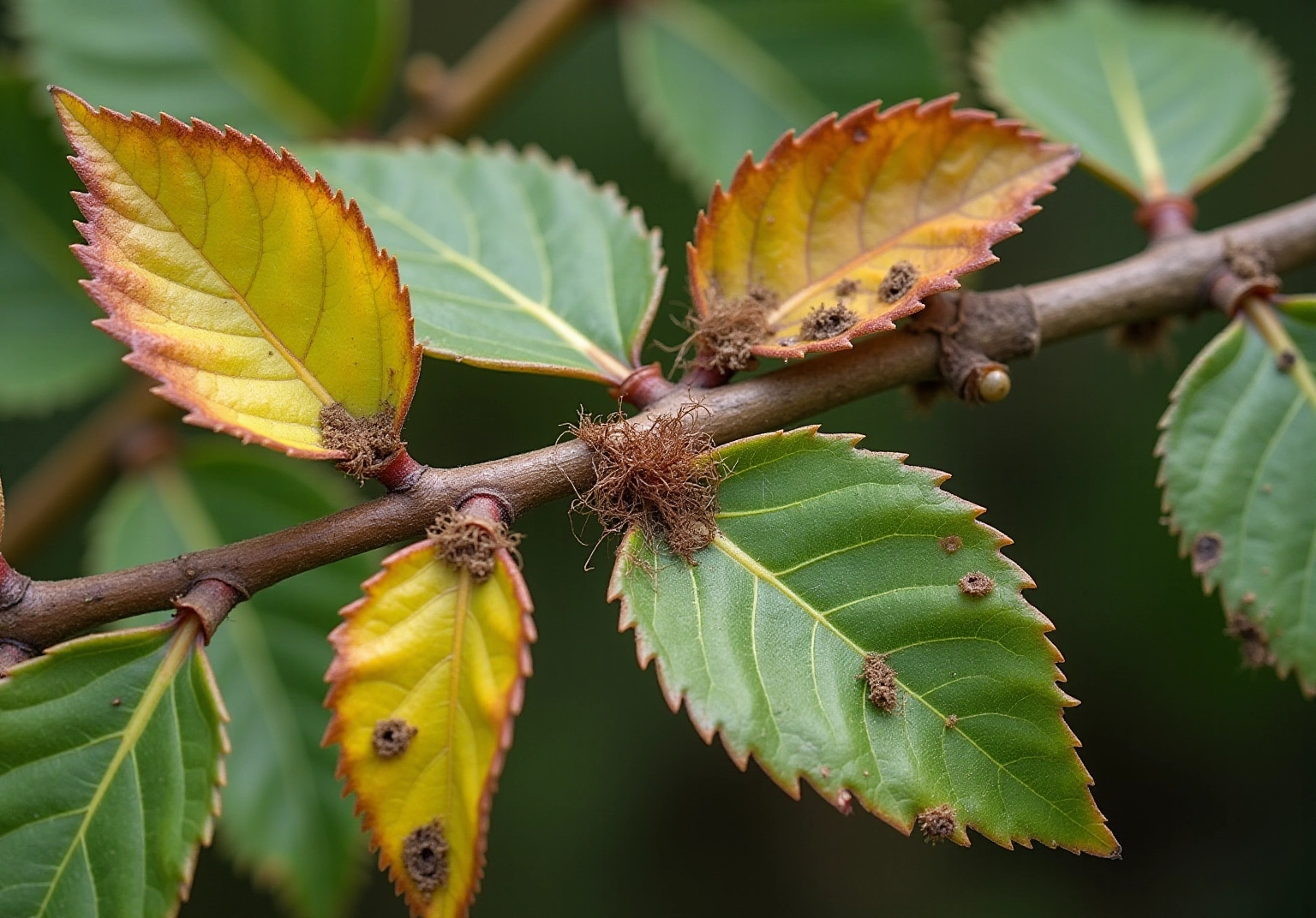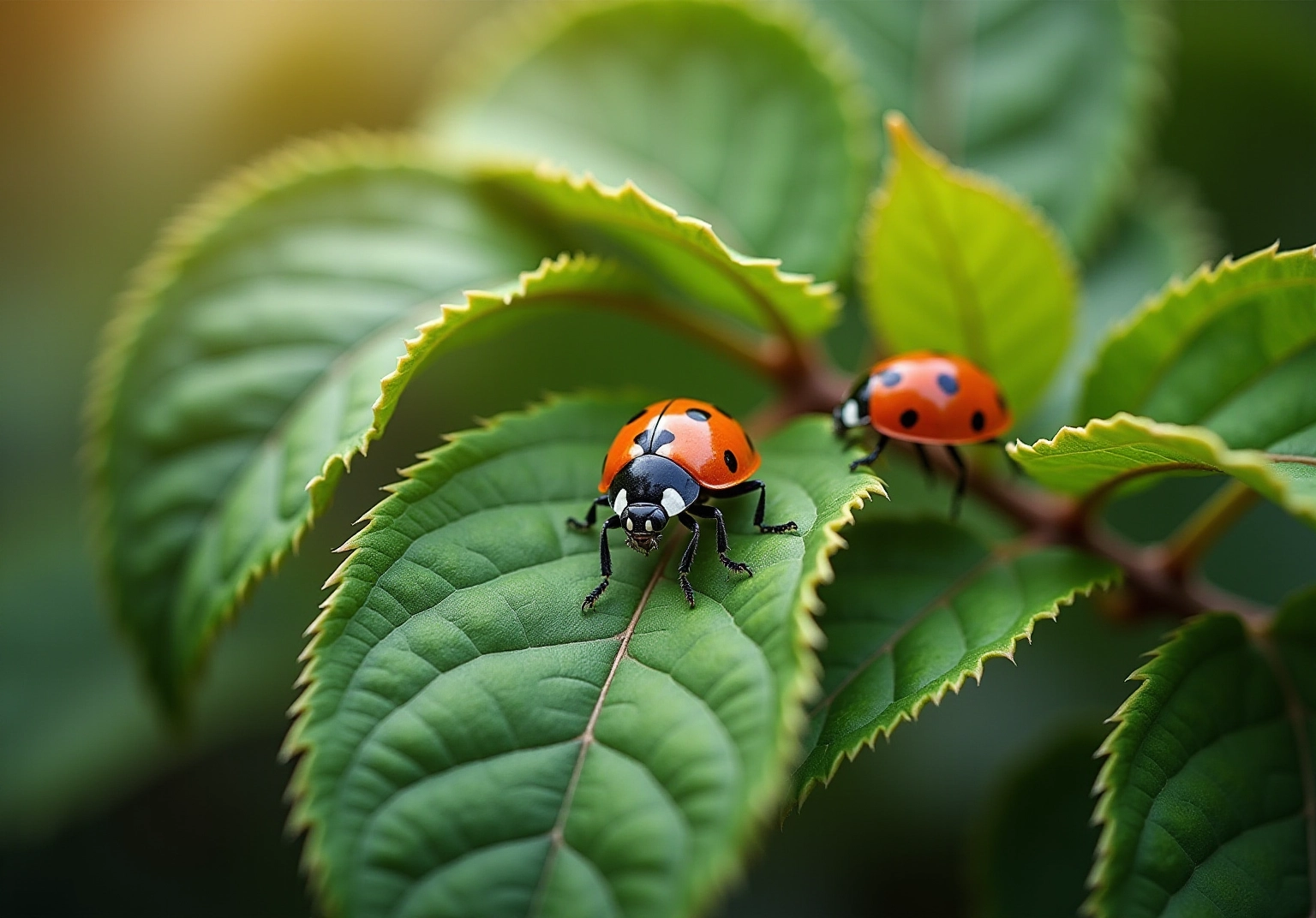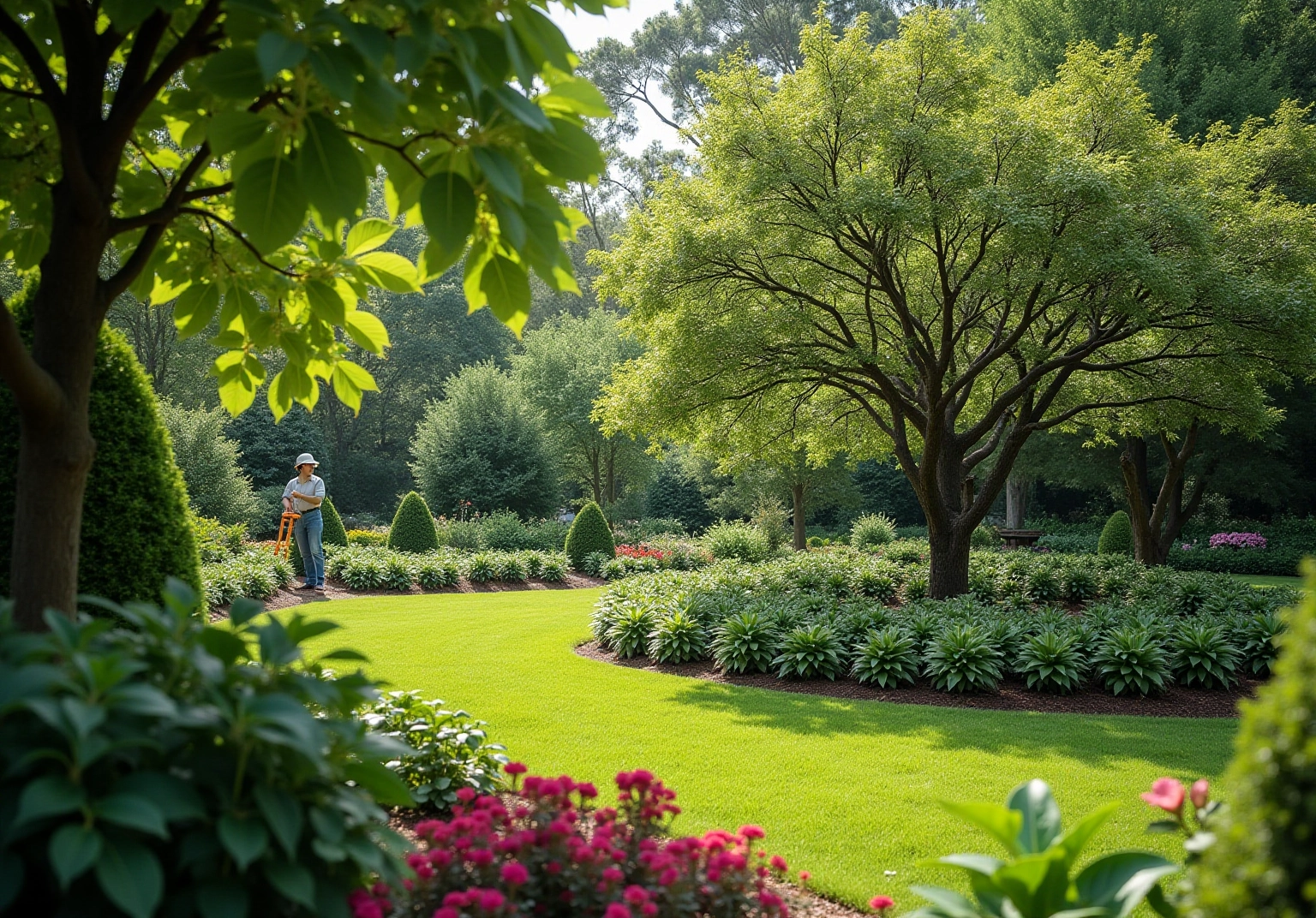Overview
Effective tree bug management is essential for maintaining luxurious landscapes, as it protects the health and aesthetics of trees from common pests like aphids and emerald ash borers. Proactive measures, including:
- Regular inspections
- Cultural controls
- The introduction of beneficial insects
are crucial strategies to prevent infestations. These practices ensure the vitality of outdoor spaces, reflecting a commitment to quality and excellence in landscape management.
Introduction
In the pursuit of a stunning landscape, the health of trees is essential, yet they frequently face threats from various pests. Common tree bugs, such as aphids and bark beetles, can cause significant damage, potentially leading to tree death. Recognizing the signs of infestations is vital for homeowners who wish to preserve their outdoor sanctuaries.
Through proactive management strategies—cultural, mechanical, biological, and chemical controls—homeowners can protect these vital landscape elements. By adopting best practices for tree care, including:
- Regular inspections
- Fostering healthy soil
homeowners can enhance the beauty of their surroundings while ensuring their trees remain resilient against future infestations.
Understand Common Tree Bugs and Their Impact
Tree bugs can significantly impact the health and aesthetics of your landscape. Common pests include:
- Aphids: These small, sap-sucking insects can lead to leaf curling and yellowing, impacting plant vitality.
- Emerald Ash Borer: This harmful beetle targets ash trees, causing rapid deterioration and potentially leading to their demise.
- Spider Mites: Tiny arachnids that produce webbing and cause stippling on leaves, affecting overall plant health.
- Bark Beetles: These insects burrow into the bark, disrupting the flow of nutrients essential for plant growth.
Understanding the nuisances, such as the tree bug and their effects, is crucial for maintaining the beauty and wellness of your landscape. By recognizing the challenges posed by these pests, you can take proactive measures to protect your investment in your outdoor space.

Identify Tree Bugs: Signs and Symptoms
To effectively manage the presence of tree bugs, it is essential to first identify them. Look for these signs:
- Discolored Leaves: Yellowing or browning may indicate stress from pests.
- Webbing: Fine webs on branches or leaves often suggest spider mite presence.
- Bored Holes: Small holes in the bark indicate potential bark beetle activity.
- Sticky Residue: A sticky substance on leaves can signify aphid infestations, often accompanied by sooty mold.
- Leaf Drop: Premature leaf drop may be a sign of severe pest damage.
Regular evaluations of your plants will assist you in detecting signs of tree bug infestations early, enabling swift measures. As Dr. Kathleen Knight, a Research Ecologist with the USDA Forest Service, observes, “With climate change, the viability of these plant species becomes more important in flood or drought events.” This emphasizes the critical importance of preserving plant health, not only for aesthetic appeal but also for ecological resilience. A 2021 study found that forests affected by insect infestations sequester 69% less carbon compared to healthy forests, underscoring the necessity of proactive management. By staying vigilant, homeowners can protect their investments and ensure their outdoor spaces remain vibrant and inviting, reinforcing Grow Landscapes’ dedication to quality outdoor living solutions.

Manage Tree Bugs: Effective Control Methods
Managing plant nuisances effectively requires a comprehensive strategy that integrates various control techniques to ensure the vitality and attractiveness of your landscape.
Cultural controls are essential; prioritize plant health by implementing proper watering, fertilization, and pruning techniques. These practices not only enhance the resilience of plants against insects but also contribute to the overall health of your garden. Research indicates that maintaining strong tree health significantly reduces vulnerability to tree bugs, with effective cultural methods leading to a notable decrease in their populations.
For minor infestations, mechanical controls such as hand-picking insects or utilizing strong water sprays can be highly effective. These techniques allow for prompt action without the use of chemicals, preserving the integrity of your beautiful surroundings.
Biological controls present a natural solution; introducing beneficial insects, like ladybugs, can help address insect issues. These predators play a crucial role in maintaining a balanced ecosystem in your garden, effectively regulating harmful insect populations without compromising the area’s visual appeal. Research underscores the importance of understanding the ecological mechanisms that enhance the effectiveness of these biological controls. Notably, studies have shown a significant reduction in natural enemy density when isolated from natural habitats, highlighting the necessity for a balanced ecosystem.
When warranted, chemical controls can be applied through targeted treatments using insecticidal soaps or neem oil. It is vital to adhere to label instructions closely and consider the potential effects on beneficial insects to uphold ecological balance.
In instances of severe infestations, seeking professional assistance from an arborist is advisable. Their expertise can provide tailored solutions that address specific infestation challenges while preserving the aesthetic appeal of your outdoor space. As highlighted in the case study titled “Need for Further Research on Augmentation Practices,” understanding the generality of landscape dependency patterns in biological control is essential for effective management.
By implementing these strategies, you can safeguard your trees from tree bug infestations and ensure that your outdoor spaces remain inviting and visually stunning. As Ulrich Kuhlmann emphasized, the biological control community must adhere to access and benefit-sharing regulations, underscoring the importance of ethical practices in managing harmful organisms.

Prevent Future Infestations: Best Practices for Tree Care
To prevent future infestations and maintain a luxurious landscape, it is essential to implement best practices that ensure the health of your outdoor space.
Regular Inspections: Conduct routine checks for signs of pests or disease. Early detection is crucial for effective management, allowing for timely intervention and protection of your plants.
Healthy Soil: Ensure your plants are placed in nutrient-rich soil, which is vital for fostering robust growth and improving resistance to insects. Overwatering can create favorable conditions for root rot pathogens, making it essential to maintain a balanced watering schedule. Healthy soil significantly contributes to the overall vitality of trees, rendering them less susceptible to infestations from tree bugs.
Mulching: Utilize organic mulch to retain moisture and inhibit weeds, which can attract tree bugs. Mulching not only enhances soil health but also creates an environment that is detrimental to harmful organisms.
Proper Pruning: Remove dead or infected branches to improve air circulation and reduce pest habitats. Optimal pruning methods vary depending on the age, size, and species of the plant, ensuring that each specimen receives the appropriate care, especially to prevent issues related to tree bugs, and incorporating a variety of tree species can minimize the risk of widespread infestations. A diverse environment can disrupt pest life cycles and lessen the chances of substantial damage.
Consult Professional Arborists: Engage with professional arborists who can provide expert recommendations tailored to your specific outdoor needs. Their insights can assist you in applying effective plant care strategies.
By adhering to these practices, you can cultivate a thriving landscape that not only exudes luxury but also demonstrates resilience against pests. This approach ensures your outdoor space remains a serene retreat. As Andrew K. Koeser notes, these practices serve as a blueprint for actionable science designed to help differentiate effective tree care practices from those that may not contribute to tree growth and longevity.

Conclusion
Maintaining the health of trees is essential for preserving the beauty and functionality of any landscape. By understanding common tree pests such as aphids, emerald ash borers, spider mites, and bark beetles, homeowners can better recognize the early signs of infestations. Indicators such as discoloration, webbing, and premature leaf drop signal that prompt action is necessary to protect these vital elements of outdoor sanctuaries.
Effective management of tree pests requires a multifaceted approach. Implementing cultural, mechanical, biological, and chemical control methods enables homeowners to address infestations while preserving the integrity of their landscapes. Regular inspections, fostering healthy soil, and promoting biodiversity are essential practices that not only enhance the resilience of trees but also contribute to the overall vitality of the environment. Consulting with professional arborists can further ensure that tailored strategies are employed for optimal care.
Ultimately, by adopting these proactive management strategies and best practices, homeowners can cultivate a stunning outdoor environment that flourishes amidst the challenges posed by pests. This commitment to tree health enhances the aesthetic appeal of landscapes and contributes to ecological resilience, ensuring that these natural treasures continue to thrive for generations to come.
Frequently Asked Questions
What are some common tree bugs that can affect my landscape?
Common tree bugs include aphids, emerald ash borers, spider mites, and bark beetles.
What damage do aphids cause to plants?
Aphids are small, sap-sucking insects that can lead to leaf curling and yellowing, negatively impacting plant vitality.
How does the emerald ash borer affect ash trees?
The emerald ash borer is a harmful beetle that targets ash trees, causing rapid deterioration and potentially leading to their demise.
What are spider mites and what damage do they cause?
Spider mites are tiny arachnids that produce webbing and cause stippling on leaves, which affects the overall health of the plant.
How do bark beetles impact trees?
Bark beetles burrow into the bark of trees, disrupting the flow of nutrients essential for plant growth.
Why is it important to understand the impact of tree bugs?
Understanding the nuisances posed by tree bugs is crucial for maintaining the beauty and wellness of your landscape, allowing for proactive measures to protect your outdoor space.



